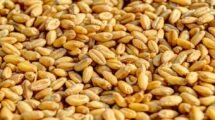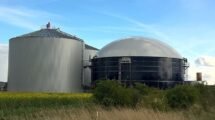In the forthcoming Kharif season, India’s agriculture industry is expecting record production volumes. Despite a spike in Covid-19 numbers, agricultural production did not suffer in 2020 and does not appear to be slowing down this year. The Union government anticipates a rise in demand from the agricultural sector and is actively planning to provide the necessary quantities of seeds, fertilisers, and insecticides.
However, despite the legacy issues that Indian agriculture sector has been afflicted with for decades, this show of steadily rising production is taking place. Limited mechanisation, a lack of farmer education and information, insufficient storage and logistics, and limited land holdings. The industry’s efficiency is also exceedingly low, as it employs about 60% of India’s population yet provides only 18% of India’s GDP.
Also Read: Good weather, fewer pest attacks leads India to set record in wheat output
ETILC representatives from the industry examined which aspects of the sector needed to be overhauled and what policies needed to be implemented to eventually make a difference.
According to Kalyan Ram Madabhushi, CEO – Chemicals, Group Business Head – Fertilisers & Insulators, Aditya Birla Group (Chemicals), ‘The agriculture sector urgently need a holistic, goal-oriented national strategy to be designed and implemented in the mission mode for its advancement.
The sector will gain enormously from a comprehensive framework with clear definition of roles for institutions, affordable technology and digitalisation, appropriate policies, extension outreach, and technical training.’
Dhanuka Agritech, an agro-chemical company, draws a parallel with China and notes that, though India has vast agricultural potential, its final production is low due to a lack of new technology pesticides and other agri-inputs such as spray technology such as drones.
There is no unique pesticide research being conducted in the country, and whatever is happening globally is limited to the EU, the United States, and Japan.
| Particulars | China | India |
| Arable Land (2018) | 119.49 mn ha | 156.42 mn ha |
| Rainfall | 645 mm | 1083 mm |
| GDP (Agriculture) (2019) | US$ 1004 billion | US$ 460 billion |
| Pesticides Consumption(2018) | 13.07 kg / ha | 0.34 kg / ha |
| Fertilizers Consumption (Nitrogen + Potash + Phosphate) (2018) | 346 kg / ha | 161.5 kg / ha |
Source: Pesticides – 2018 FAO, GDP – 2019 World Bank, Fertilizer – FAO 2018, Arable land – FAO – 2018, Agriculture Land – FAO 2018 (http://www.fao.org/faostat/en/#data/RL)
The selection of crops is another important aspect influencing the sector’s growth. There is significant overproduction of cereals such as wheat and rice, which produce relatively little value when compared to high-value horticultural vegetables crops, fisheries, poultry, and dairy.
‘Horticulture crops including fruits and vegetable bring more value to farmers. There is enormous potential in horticulture crops, but India currently only accounts for 1.8 percent of the worldwide export market for fruits and vegetables.
The Government of India must realign its 715 Krishi Vigyan Kendras (KVK) distributed around the country,’ says RG Agarwal, Chairman of the Dhanuka Group.
Adopting global best practises can produce excellent results. Diversification to high-value crops, agricultural mechanisation, the establishment of farmer-producer organisations, and a shift to contract farming will all be beneficial.
Also Read: Union Govt announced a rise MSP of key kharif crops by 4-5%
Indian agriculture is likewise heavily reliant on the monsoon. According to management consulting company Roland Berger, just 38% of agricultural land in India is irrigated, while 56% of agricultural land in China is irrigated. Even the enabling infrastructure in terms of credit, marketing, storage, and so on is insufficient.
All of these variables have resulted in crop yields that are significantly lower than worldwide benchmarks. Despite allocating a major percentage of our land and 80-90 percent of our water to agriculture, our yields in maize, rice, groundnuts, and pulses are 54%, 40%, 31%, and 33% lower than world average.















Add Comment